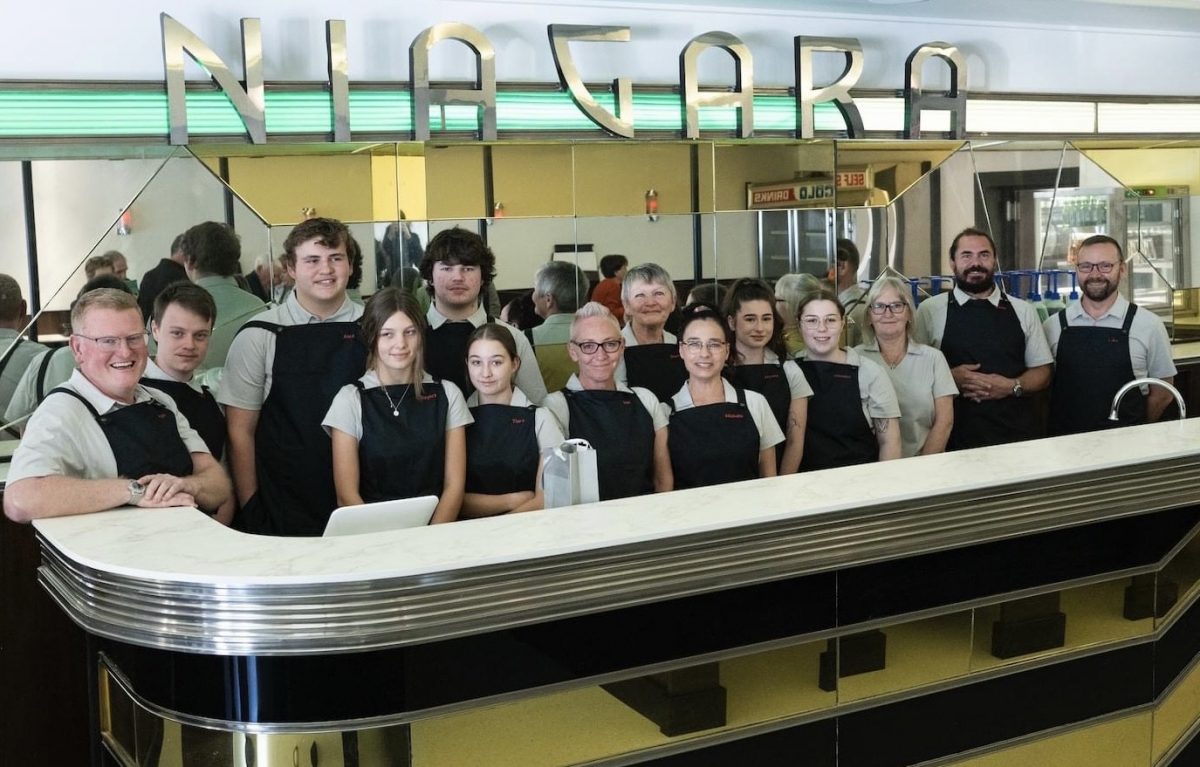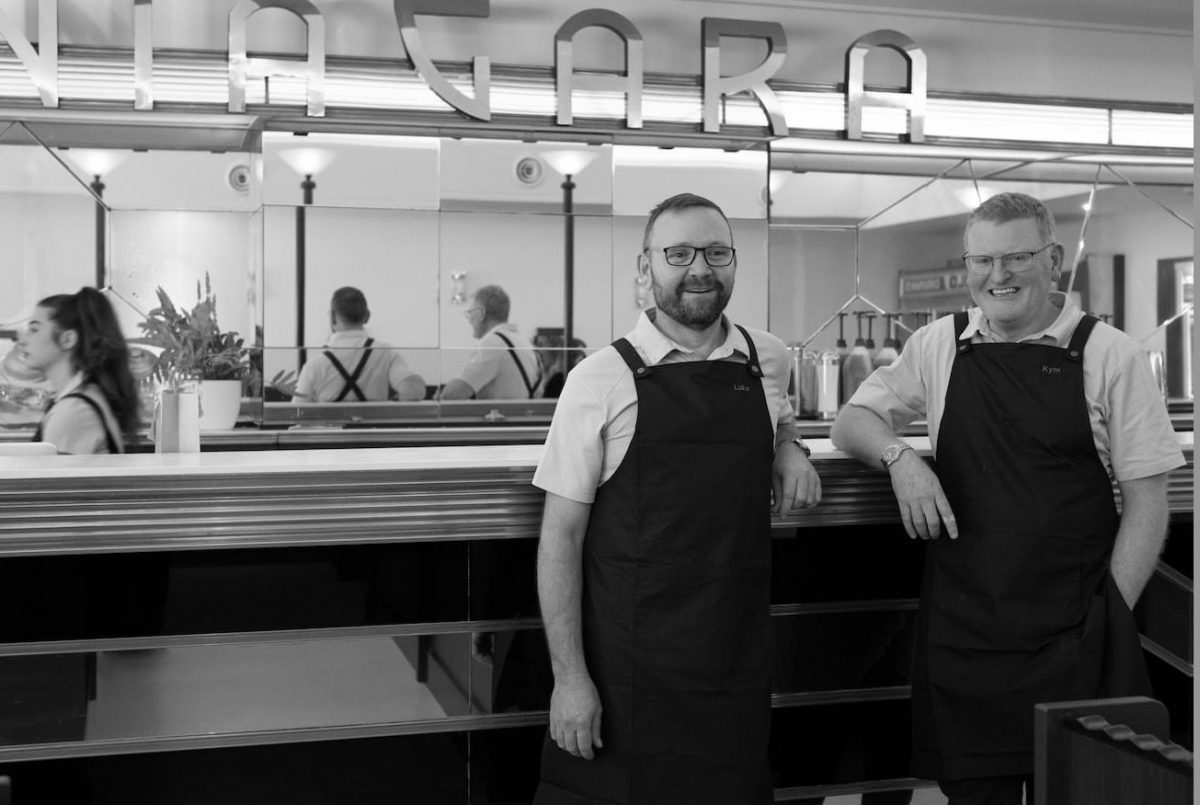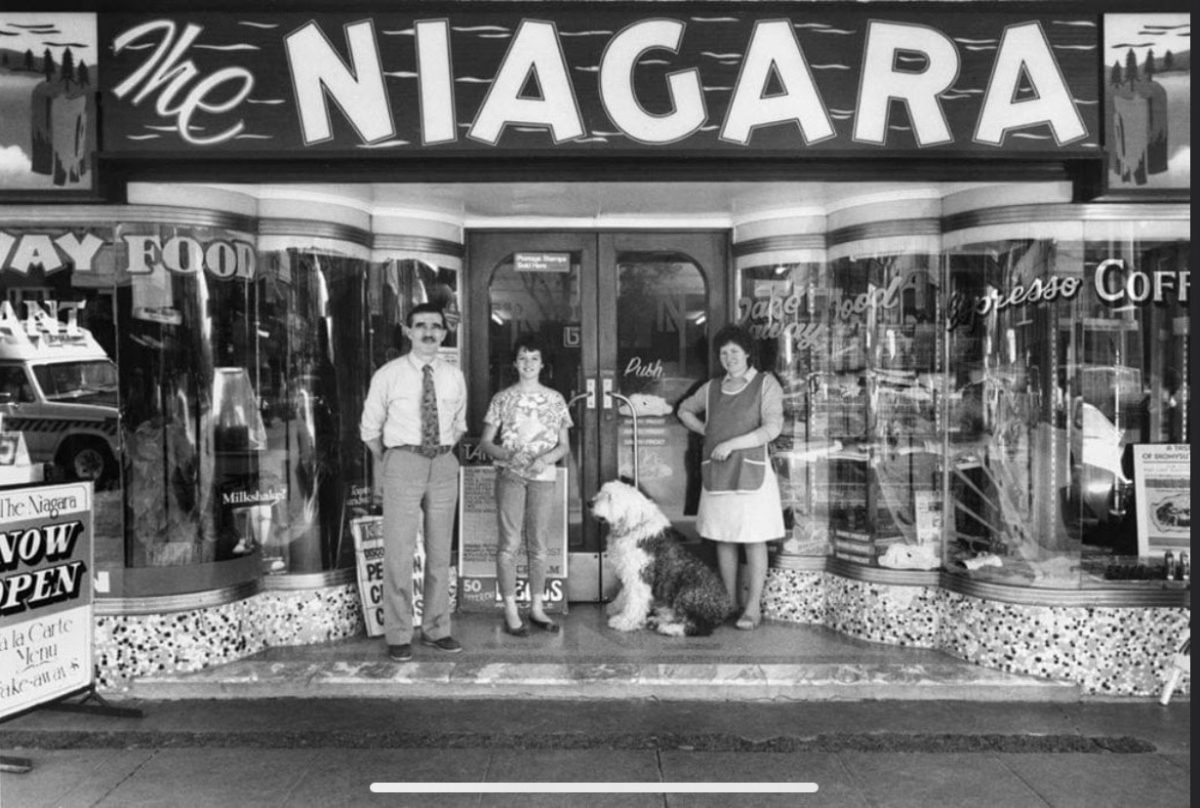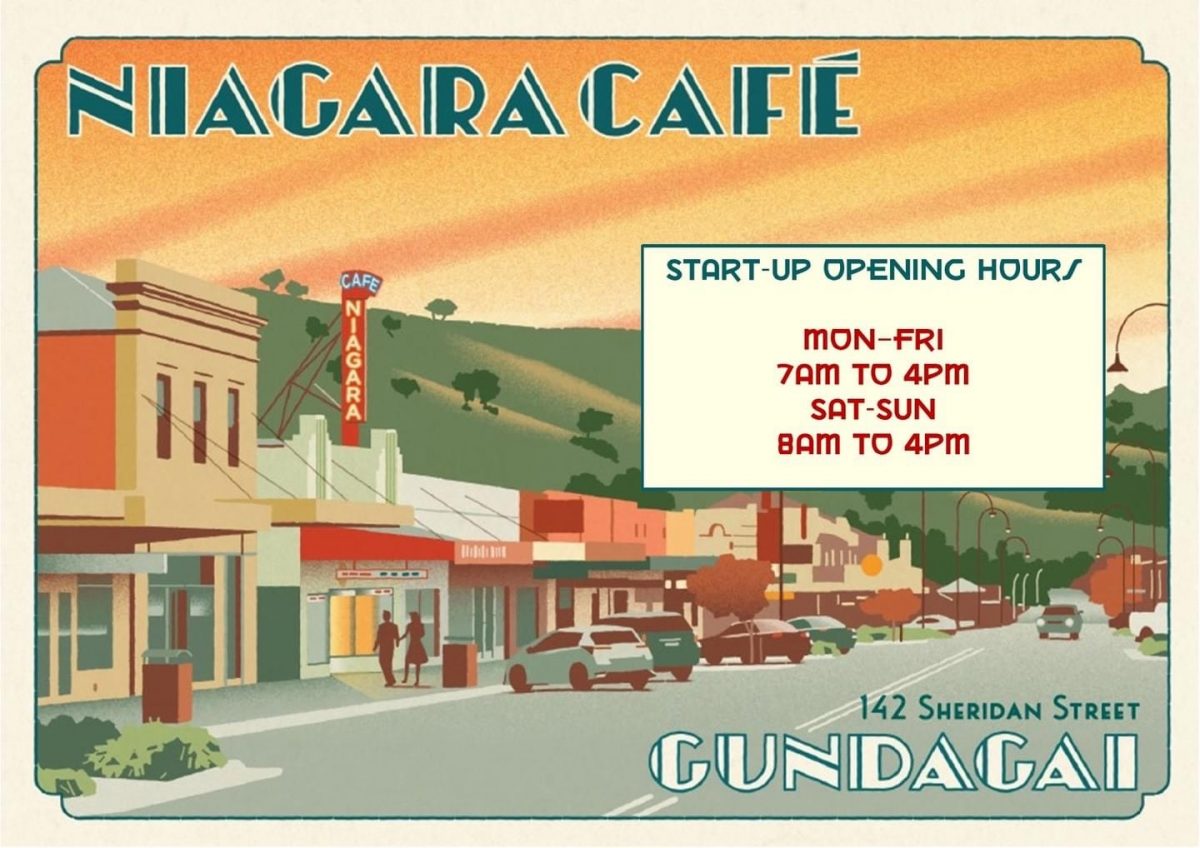
Luke Walton (far right) and Kym Fraser (far left) want their staff to understand and share the heritage of the Niagara Cafe. Photo: Effy Alexakis.
“Look, I’ll be quite bold here. I tend to think that Niagara Cafe is going to replace the Dog on the Tuckerbox.”
Historian Leonard Janiszewski is unable to hide his joy at seeing the restoration of Australia’s last authentic Greek cafe in Gundagai – and goes out on a limb with his prediction of tourism potential.
“It is the longest-running Greek cafe that still survives, and it’s unique within Australia,” he says.
Gundagai’s historic Art Deco Niagara Cafe dates back to 1902, and its restoration has been a labour of love for Luke Walton and his partner Kym Fraser.
The pair purchased the cafe from the Loukissas family whose tenure from 1983 had ensured over a century of continuous Greek ownership.
“We had noticed the Niagara was on the market and I think once the idea came to our heads and we came and looked at it, we were done,” Luke explains.
“We were attracted by the restoration process more than anything and just for the satisfaction of the project.”

Luke and Kym hope the restored cafe can become a community hub once again. Photo: Effy Alexakis.
To step into the Niagara Cafe is to step back into a bygone era.
Many of the original art deco features remain and Luke says it was vital to preserve them.
“The key features of the place, the joinery and the main counter are from a 1938 fit-out,” he says.
“We knew that booths needed to stay but after about 80 years they were really quite beaten up.”
Original pieces were restored and Luke says they worked with an architect to add an appropriately styled coffee bench and do a modern refit of the kitchen.
Leonard Janiszewski says he’s impressed with the finished product.
“They’ve retained the Streamline Moderne [architecture] that followed those lines. They’ve recreated the semi-dome ceiling and they brought it into the 21st century,” he enthuses.
“It’s very sensitive to the heritage but also sensitive in terms of bringing it into the present. It’s very ritzy!”
Leonard and photographer Effy Alexakis have documented the history of Greek Cafes and Milkbars in Australia and Leonard says the Niagara stands out for its style and ambition.
“That 1938 neon light that was on the outside is phenomenal in terms of the size and the cost at the time for it to be installed,” he says.
“It was incredibly unique.”

The Loukissas family outside Niagara Café in Gundagai, 2002. Photo: Effy Alexakis.
Niagara’s “Wonder Cafe” architecture and menu were inspired by early 20th-century American innovations.
“They brought over sodas, they bought over the idea of hamburgers – the oldest hamburgers were sold in cafes from the 1930s onwards – and then you had the development of the milk bar and then the popularization of milkshakes,” Leonard says.
“The interiors were Streamlined Moderne, and it was a fantasy that duplicated what many people would see at the local picture theatres.
“Touring was big in the 30s and 40s and even into the 50s and strategically they knew they were between Melbourne and Canberra and Melbourne and Sydney.”
Leonard explains that the popularity of traditional Greek cafes began to decline in the 1970s as food tastes broadened and bottled drinks replaced the cafe-made version. Families drifted away and one by one the milkbars closed their doors or transformed into takeaway venues.

Online poster for the Niagara Cafe reopening. Photo: Facebook.
The cafe’s new owners are hoping that interest in the refurbished Niagara Cafe will once again put it on the map and Luke says they are making sure to celebrate its unique heritage.
He invited some of the former owners to take a tour and share their stories with his new staff.
“We think their role is to be able to answer those questions because plenty of people come in and are curious and want to hear that stuff,” he says.
But Luke is hoping the venue becomes more than a tourist attraction.
“It was a community hub really – if someone had a birthday – I think there were even wedding breakfasts and first communion breakfasts here – that’s what we’d like to see it become that again,” he says.
“Gundagai is a very friendly town, so there’s a lot of travellers coming to stay. So I hope it is a mixture of both.”
To keep up with the Niagara Cafe, follow them on Facebook.







